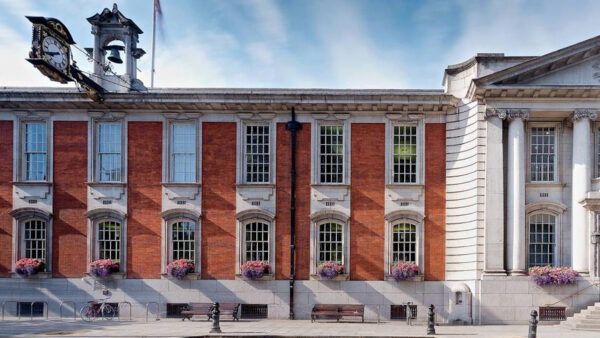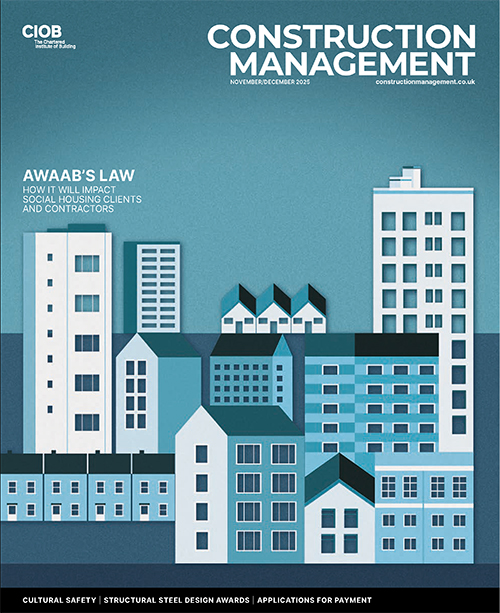Major UK housebuilders recently signed the Homes for Nature commitment, meaning new developments will include biodiversity features such as nesting bricks and hedgehog highways as standard. Will Mann speaks to Miller Homes’ Jo Stott, who has led the working group behind the initiative.
Tell us about the Homes for Nature commitment. What are the targets and why have housebuilders been happy to sign up?
The Homes for Nature initiative was developed by the Future Homes Hub’s On-Site Nature Measures Working Group, and is a voluntary commitment that housebuilders have made to support two key species that are currently facing loss of traditional habitat – the swift and the hedgehog. In particular, cavity nesting birds have suffered loss of nesting sites due to the improved design for energy efficiency of our homes.
Although these two species have been the focus of the commitment so far, we expect that other species of birds, bats and pollinators will benefit from the scheme, which encourages a wider range of measures for nature to be deployed on site.
All those committed to the scheme have signed up to deliver integrated universal nest bricks at a ratio of one per home and a hedgehog access route or highway on all developments. The commitment applies to all developments going through the planning process from September.
Some housebuilders, including Miller Homes, have been installing measures for nature for several years now, but we all recognise the need to accelerate delivery. It’s something we can do right now to help nature while the wider benefits of the biodiversity net gain legislation gradually come to fruition.

“Making sure that sites deliver the best outcomes for nature while balancing all the other competing needs means relevant teams getting together at the very beginning of the design.”
What is the technical guidance the On-Site Nature Measures Working Group is working on and what format will that take?
The guidance will ensure that everyone in the sector has a quick access guide that sets out correct installation and location of the measures we’re signed up to deliver and more. The measures are relatively simple but there is a bit of detail that our technical, planning, production and sales teams need to know to ensure the success of the project.
We’ve been fortunate to have input from experts at the RSPB, Action for Swifts, the Bat Conservation Trust and the Hedgehog Street campaign in addition to sector experts at the NHBC and ecologists, planners and designers representing the organisations that have signed up to the scheme.
Critically, the guidance also covers how we expect signatories to report on the measures they’ve installed so that we can keep track of progress. There is also content on the conversations we need to have with our customers to ensure they are aware of what we’re aiming to achieve by installing nest bricks and hedgehog highways.
That’s also a great opportunity to mention other things that households can do to help nature.
The guidance will be available as a digital document that anyone can access.
From a construction perspective, what are the main technical challenges in creating
‘nature-friendly’ developments?
Making sure that sites deliver the best outcomes for nature while balancing all the other competing needs means relevant teams getting together at the very beginning of the design. That means getting technical, ecology, design, planning and commercial teams to think about how site design can be more nature-friendly and then keeping that on the agenda as the site design develops.
SuDS design is a great example – there is an obvious technical function and a space impact but there is also potentially a great opportunity for nature. Thinking about levels across the site and how mammals, amphibians and reptiles can move through the site needs to be considered, especially when significant infrastructure is required.
Hedgehogs are particularly affected by steep level changes so ensuring suitable routes for hedgehogs needs careful consideration.

The commitment’s been launched. How will you follow-up with signatories to check they are delivering?
From the outset it has been our priority to ensure that this project delivers real benefit for nature. The commitment itself requires signatories to agree that they will report progress annually to the Future Homes Hub, but also in annual reports and on websites.
We’re also committed to following up to see what benefits are being delivered for nature. It can be difficult to survey when homes are occupied but we are confident there will be opportunities to follow up with residents, for example through management companies, and this is something we have started to explore at Miller Homes.
This is crucial because it will take time for nature to find and make use of these measures. Homeowners may move out and new families move in, so we need to have an eye on longevity and enduring communication about our long-term goals.
The project will run for at least five years by which time we hope the measures we are installing will be supporting nature and will have become a standard item which everyone expects to see on all new developments.
Homes for Nature commitment
The Homes for Nature commitment was developed by the Future Homes Hub’s
On-Site Nature Measures Working Group, chaired by Miller Homes associate environmental sustainability director Jo Stott.
The commitment:
- will see a nesting brick or box installed for every new home built, and hedgehog highways as standard on every new development;
- applies to new developments taken through planning from September 2024;
- features 21 participating housebuilders, who build more than 90,000 homes a year;
- will run for five years, with annual reporting and reviews to track progress; and
- currently applies to low-rise houses, with work underway to identify an appropriate nature positive approach for new apartments and high-rise buildings.
Organisations such as the RSPB, Action for Swifts, Hedgehog Street and the NHBC are helping to develop guidance.











